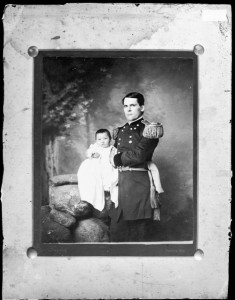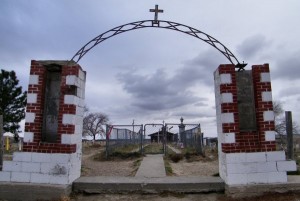Much of the language traditionally used to describe the Massacre at Wounded Knee centers around the idea of finality. It’s usually a quick note in a history book that demarcates the end of the Indian Wars, which in turn usually means the last mention of Indians in said history book. But Wounded Knee is more than just one instance of violence against the Lakota. Not only does it symbolize the suppression of a revitalization movement, as Fine-Dare notes, but it remains part of an unfinished legacy of genocide of Native peoples.
The trauma surrounding the Wounded Knee Massacre is also unfinished and continual. Fine-Dare cites the high rates of suicide, alcoholism, and poverty as evidence of the ongoing effects that events like the Massacre have had on living Lakota. Perhaps one case study that could serve to highlight the tragedy of Wounded Knee is the story of Lost Bird, an infant who was found alive by some miracle after the 1890 slaughter. A U.S. general adopted her as his own and she was taken away from her people into the world of the whites. Unfortunately the rest of her life was filled with abuse and loss until her untimely death in 1920.

Lost Bird was initially buried in a cemetery in California, where she died, but her story does not end there. Just over one hundred years after the massacre, in 1991, Native advocates fought to have her remains repatriated and she was buried at the site of the mass grave where her family members were laid to rest at Wounded Knee.
Another repatriation victory was the return of a tunic stolen from the site and later given to the Kelvingrove Museum in Scotland. In August of 1999 the shirt was brought back to Wounded Knee in the first successful international repatriation case of Native objects. The tunic was one of the famous Ghost Dance shirts worn by many members of the Sioux tribe who participated in the revitalization movement at the end of the 19th century. They believed that by participating in the dances and wearing the shirts they would be safe from the bullets of the United States military. Its spiritual and cultural significance is clear, and I was pleased to learn that it was successfully returned to the Lakota, who held a healing ceremony upon the return of the shirt.

Unfortunately as noted in this LA Times article, perhaps the seemingly easy return was due in large part to the religious value of the shirt itself. Though hundreds of possessions were taken from the bodies of the victims of Wounded Knee and sold to be displayed at the World’s Fair Exhibition, other objects that might seem less significant could take longer to return to the Lakota tribes. That is, if they were even returned at all. I believe that given the especially tragic circumstances of Wounded Knee, any and all artifacts associated with the Massacre should be returned to the Lakota people as soon as possible. These objects do not belong in any museums in the United States or elsewhere. Though the Massacre is certainly part of American history, items stolen from the victims should not be spoils of war that remain on view for museum visitors to gawk at without context. The 20 Congressional Medals of Honor awarded for bravery that day would serve as better artifacts and would generate much more complicated and fruitful discussion of the policies of extermination adopted by the U.S. government.
Links to images: http://www.nlm.nih.gov/nativevoices/timeline/657.html
http://greywolf.bravepages.com/pages3/TripWest1.html
